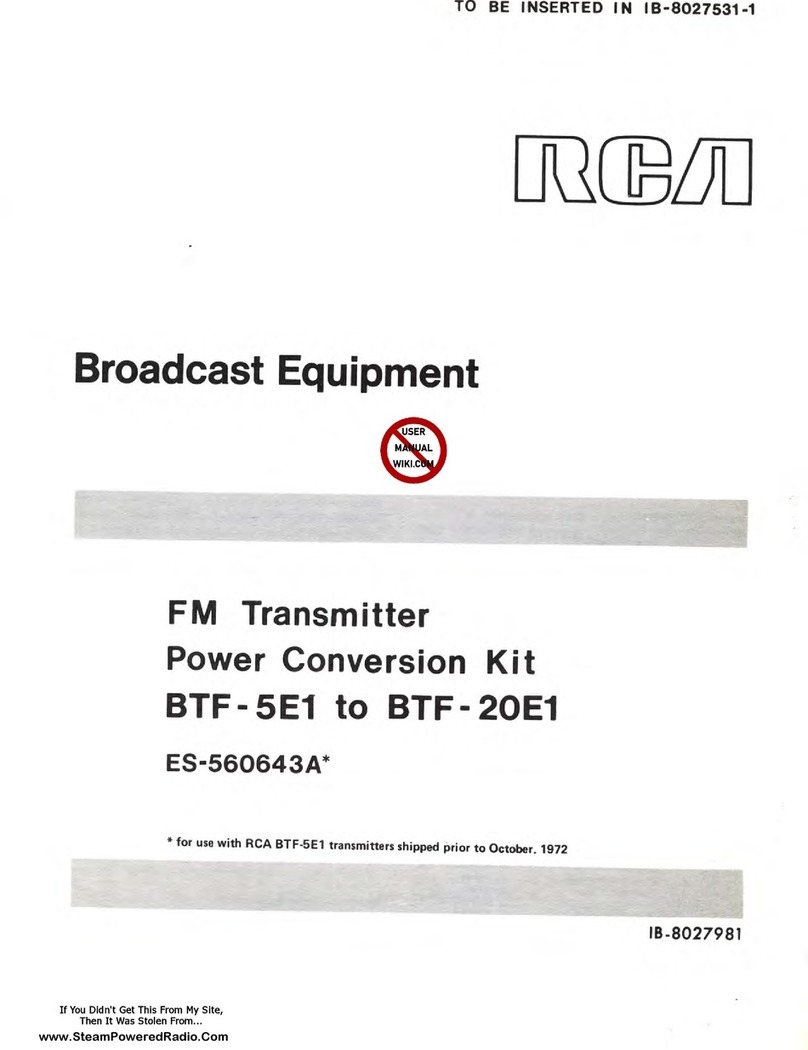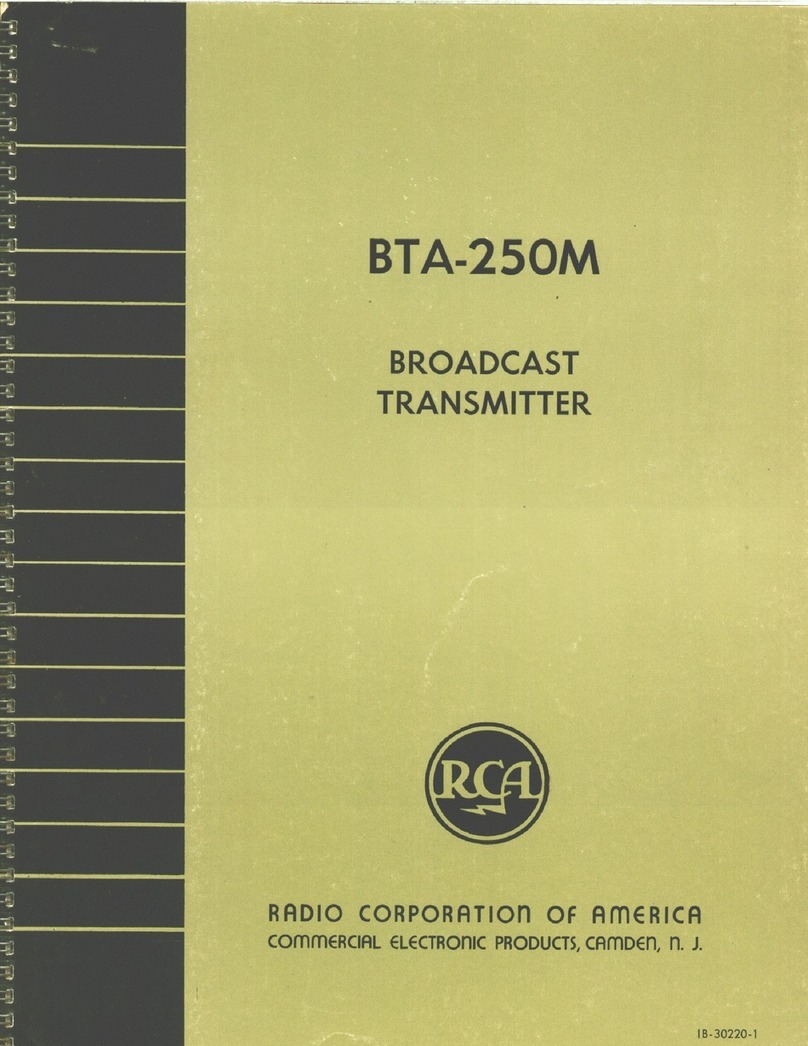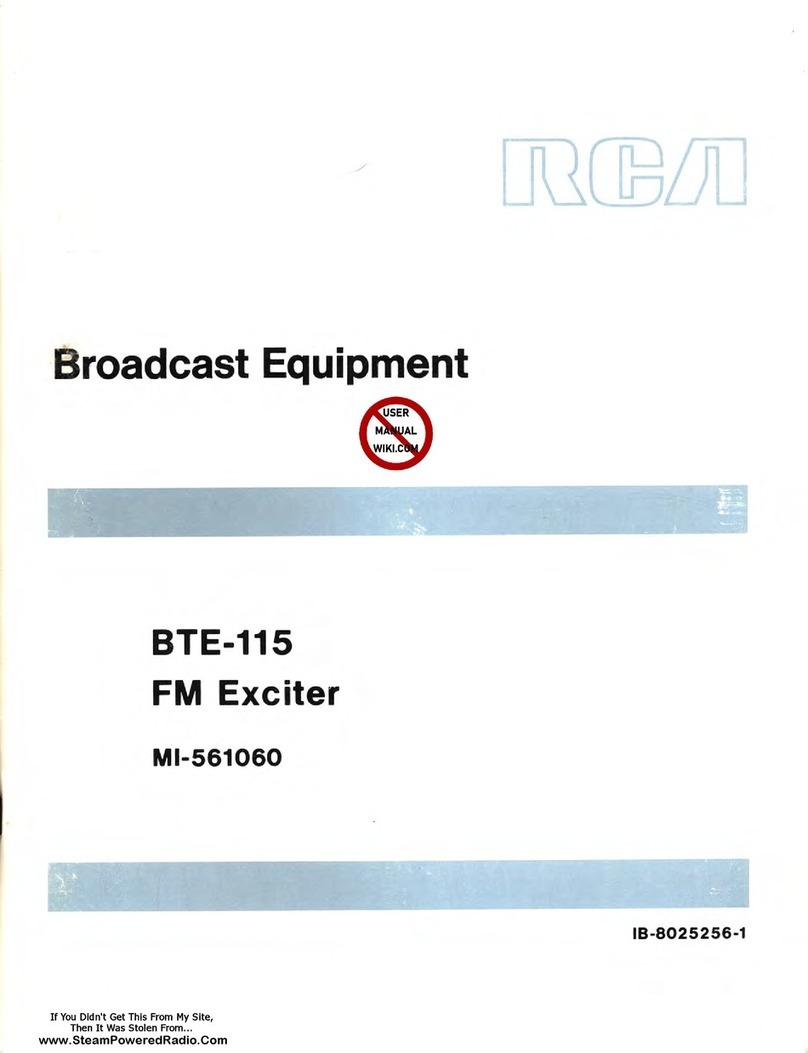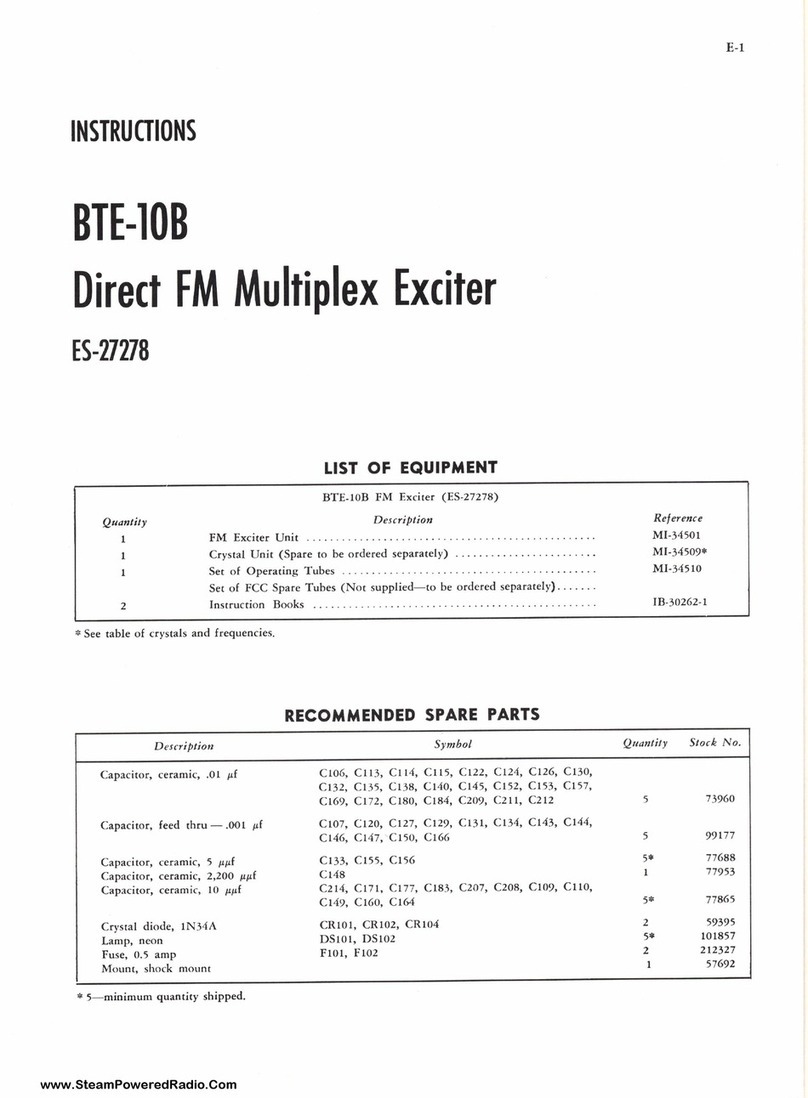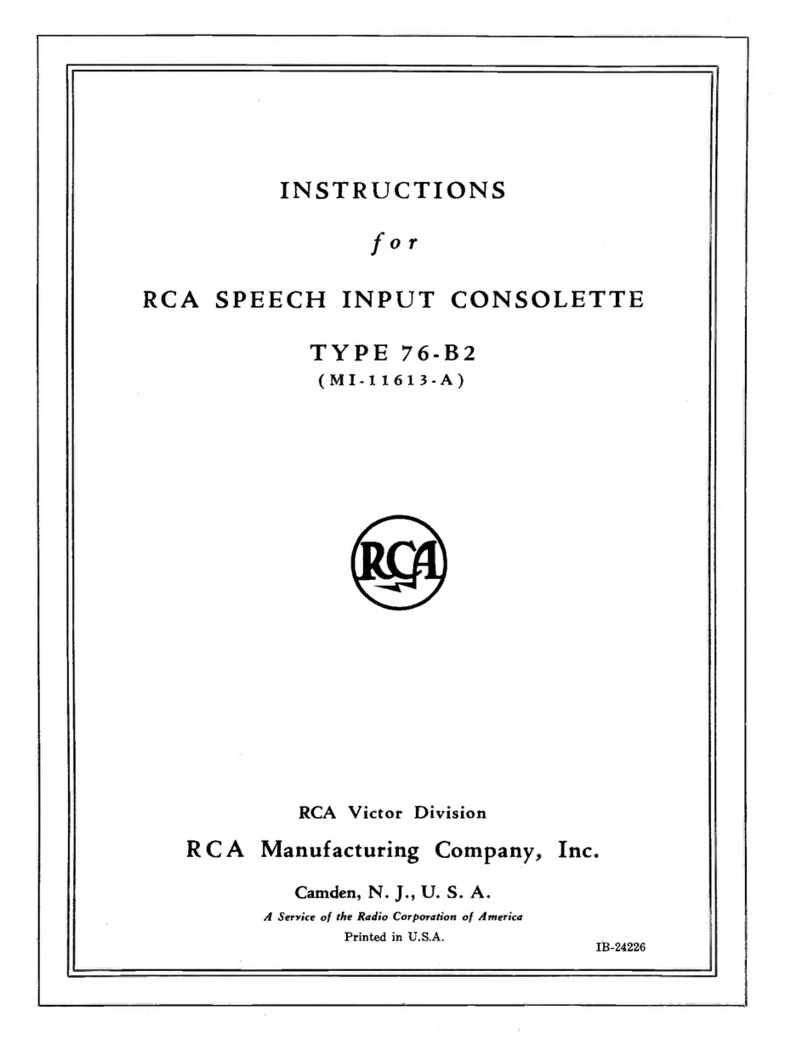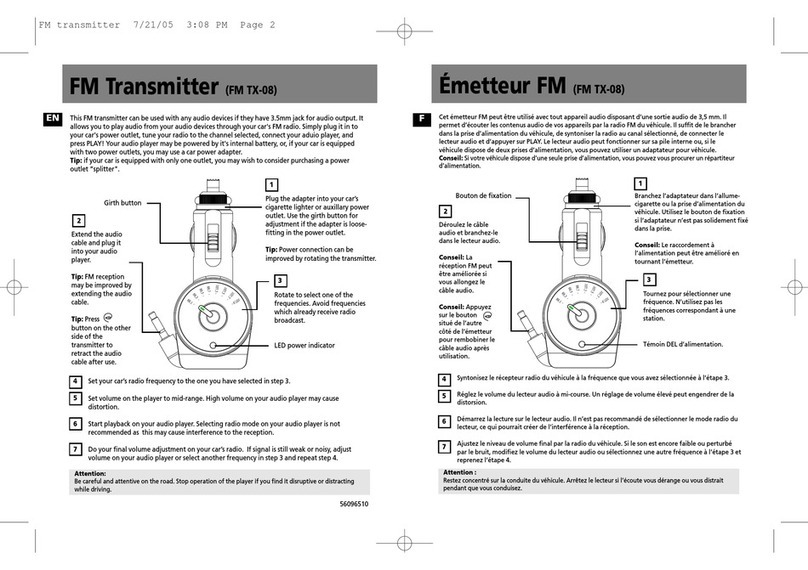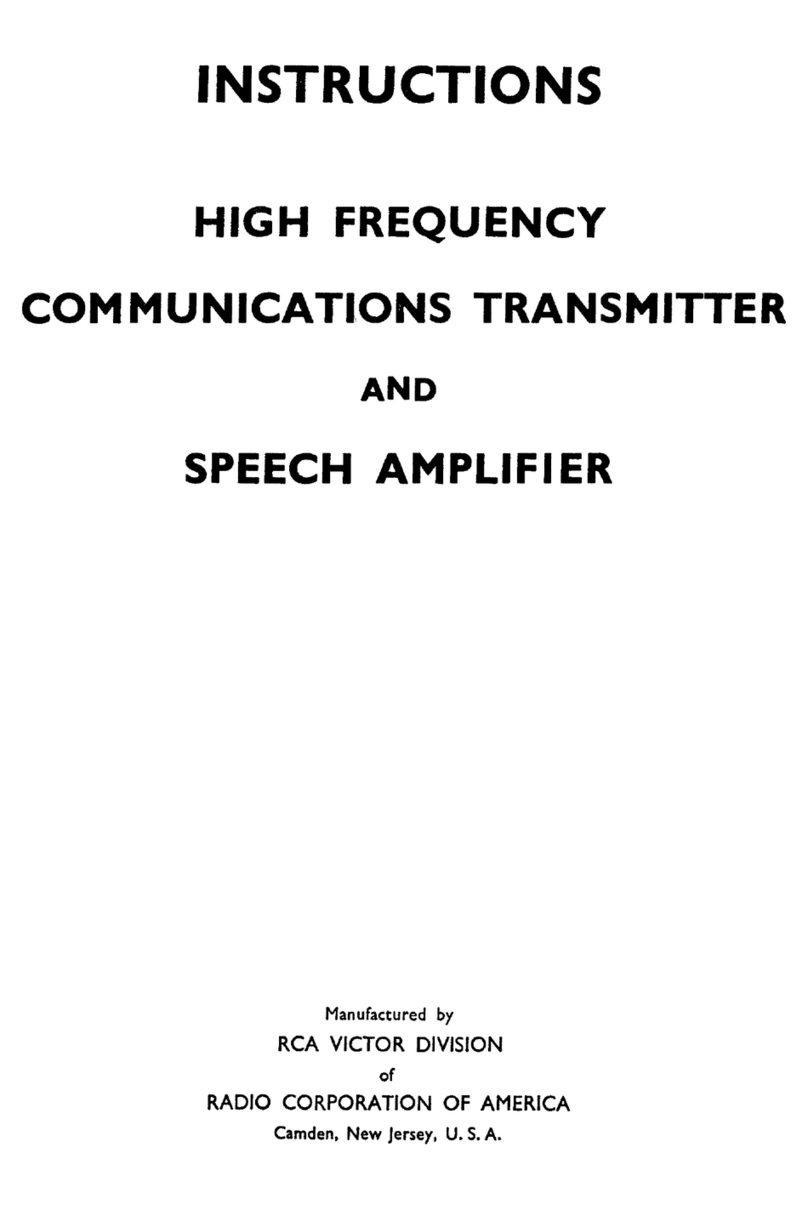
2
attenuator controls, switches, and other controls
are mounted on a slanting front panel. An arrange-
ment of switches makes it possible to use the VU
meter to check the condition of the tubes in the
program channel.
The 76-B2 and 76-B4 Consolettes are similar in
performance and operation and the instructions for
installation and operation apply to both types
unless otherwise specified.
The top of the Consolette may be opened to
inspect and service the Radiotrons and relays or
the entire upper section, which is hinged at the
back, may be lifted to expose the terminal boards
and the bottoms of the mounting plates. As may be
seen in figure 2, three terminal boards are provided
for external connections. These are mounted on
the bottom section of the chassis and are accessible
when the upper section is lifted. The terminal
boards are arranged so that the low-level audio
terminals are separated from the high-level audio
terminals and the power leads.
Five rubber -cushioned mounting plates are lo-
cated on the hinged upper chassis as follows
(left to right):
a. Relay Mounting Plate, on which are mounted
three relays and their associated equipment. Two
terminal boards, on which connections are made to
change over from two- (or three-) studio operation
to single -studio operation are mounted under
this plate.
b. Monitor Amplifier Mounting Plate, on
which are mounted the components of the monitor
amplifier and the monitor amplifier booster stage.
c. Line Transformer Mounting Plate, on which
are mounted the two line transformers and asso-
ciated resistors.
d. Preamplifier Mounting Plate, on which are
mounted the four preamplifiers.
e. Program Amplifier Mounting Plate, on
which are mounted the components of the program
amplifier and the program amplifier booster stage.
ASSOCIATED EQUIPMENT
The additional apparatus required for operating
this equipment will be determined partly by the
particular installation, depending on the number of
studios and their arrangement. The installation
described in this book is designed to fulfill, as
completely as possible, the average requirements of
the type of broadcasting station for which the
Consolette is designed. These instructions will also
serve as a guide to the customer whose installation
is not exactly as described in these pages.
The associated equipment described below, or
its equivalent, will be required for a complete
installation.
Microphones
The Consolette is normally used with two micro-
phones in each of two studios, a fifth microphone
(for announcing) in the control room, and if
desired, a sixth for an announce or transcription
booth. Terminals 9 and 10 and 47 and 48 may be
connected in parallel if the same microphone is
used for control room announcing and talk -back.
The RCA 44-BX, 74-B, MI -6203-B or 77-D ribbon-
type microphones are recommended for program
pickup, the RCA Type 88-A Pressure Microphone
for control room announcing, and the RCA MI -
6226 Aerodynamic Microphone and MI -6227
Table Stand for the talk -back circuit.
Microphone Stands
The quality and type of stands required will
depend on the number and type of microphones
used. The most suitable program -type floor stand
for use with all the above mentioned microphones
is the RCA Type 90-A. Lower priced stands such
as the KS-lA and MI -4068-D are also available.
The Type 91-A Announce Type Desk Stand
(MI -4058-C) should be used with the 44-BX
microphone only, and the 91-B Desk Stand (MI -
4092 -C ) with the other microphones.
Transcription Turntables
The RCA 70-C2 Transcription Turntables are
recommended for the transcription booth or con-
trol room installations. They may be used with the
Type 72-D or 72 -DX Recording Attachment.
Recorders
If the highest quality recording equipment is
desired, the 73-A or 73-B Deluxe Recorder is
recommended. Suggested recording setups and
connection information are shown in figure 4.
Recording Amplifiers
The Type BA -4B or 82-C1 Recording Amplifiers
are recommended for driving either the 70-C2
Transcription Turntables, when used with the
recording attachment, or the 73-A and 73-B re-
corders. (See figure 4).
Loudspeakers
The RCA Type LC -1A loudspeakers should be
used in the control room, lobby, studios, and






